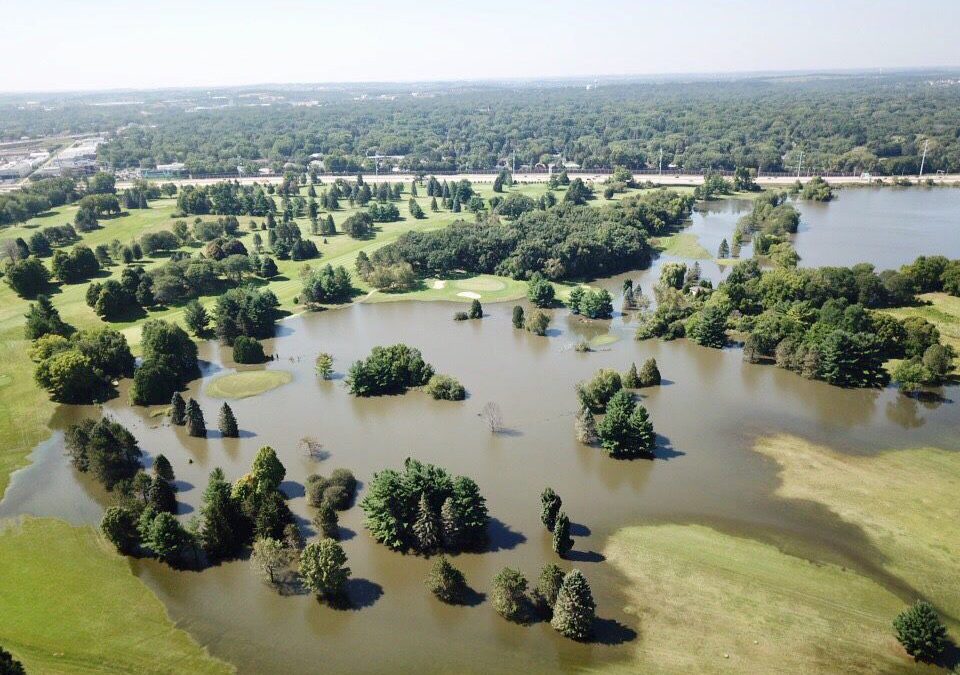President Ronald Reagan jokingly called them the nine most terrifying words ever spoken, “I’m from the government and I’m here to help.” But for golf facilities impacted by flooding and other disasters, the government can help, especially the Federal Emergency Management Association (FEMA).
Kevin Norby, ASGCA,(Herfort-Norby Golf Course Architects) notes:
“We’ve been involved with a number of golf courses that have been devastated by flooding. What you may not know is that there is financial assistance available in the way of grants for golf courses that are the victims of flooding. That hasn’t always been the case. Back in 2013, I was involved in the first FEMA (Federal Emergency Management Administration) funded golf course restoration project in the country. Prior to 2014, FEMA would only fund infrastructure replacement like pump stations or washed out bridges that were a public safety issue. However, all of that changed in 2013 when FEMA issues a policy bulletin stating that they would now fund repair or replacement golf courses and sports fields. Specifically, the policy stated that funding is eligible if ‘Grass and sod replacement is an integral part of the repair or replacement of the eligible recreational facility.’ If your course has been impacted by the recent floods and your course is owned by the City, County or local Park District, you’ve got some help available.
“After a flood, the first response by most superintendents or owners is to immediately get to work trying to get the golf course back in playable condition. However, that might not be the best course of action. Any work completed before FEMA gets involved is not going to be eligible for assistance. So, make some phone calls and make sure you know where you stand. To be eligible for these grants, the first thing that has to happen is that the Governor must declare a ‘state of emergency’ and request disaster relief funding from the President of the United States. In Iowa and Nebraska, that has already happened and is likely forthcoming in South Dakota. Once FEMA agrees to the scope and estimated costs, construction can begin.
“A perfect example of how this works is a project we did at Coal Creek Golf Course for the City of Louisville, Colorado. The course was flooded when nearly 10 inches of rain fell and Coal Creek overran its banks. The resulting flooding washed out 40 bunkers, damaged 14 greens and undermined abutments on two bridges. FEMA contributed nearly $2.5 million dollars of funding and the City contributed another $2.2 million dollars to install a new irrigation system and make some other improvements that were not eligible for funding by FEMA. We broke ground in the spring of 2014 and completed construction in the fall of 2014.
“In 2015, we assisted in securing FEMA funding for Meadowbrook and Hiawatha Golf Courses in Minnesota when Minnehaha Creek flooded both golf courses after weeks of rain. The restoration included the complete reconstruction of bunkers and the re-grassing of nearly 50 acres of fairway and rough on each course. There were also a few satellite controllers that were submerged so we made the argument that the old VTII satellites and controllers were no longer available so we needed to replace the entire control system with a new satellites and a new state-of-the-art computerized central control. FEMA covered nearly $3 million dollars in improvements for the two courses.
“If your course is prone to flooding, I would also suggest that you take steps to prepare a master plan and an emergency management plan for your golf course. That will make it a lot quicker to deal with FEMA in the future when requesting funds for flood restoration.”

